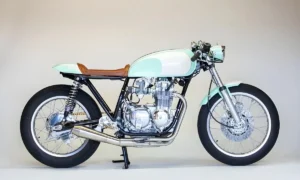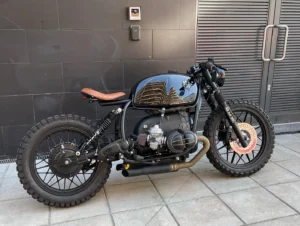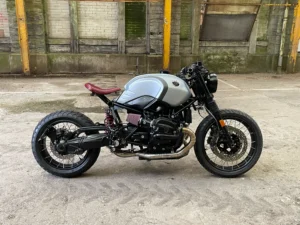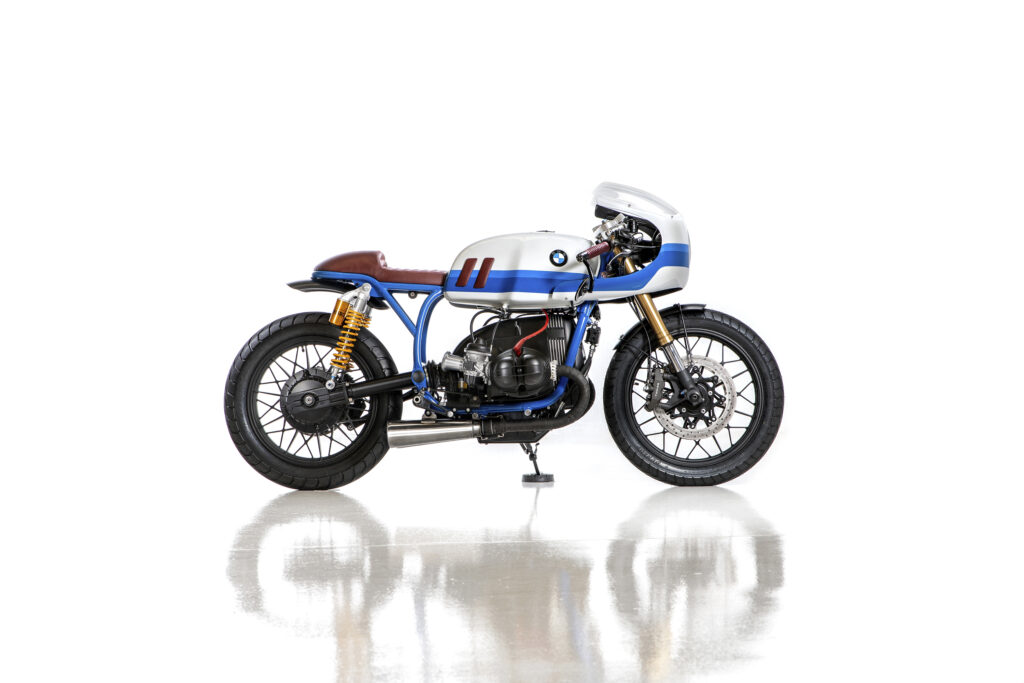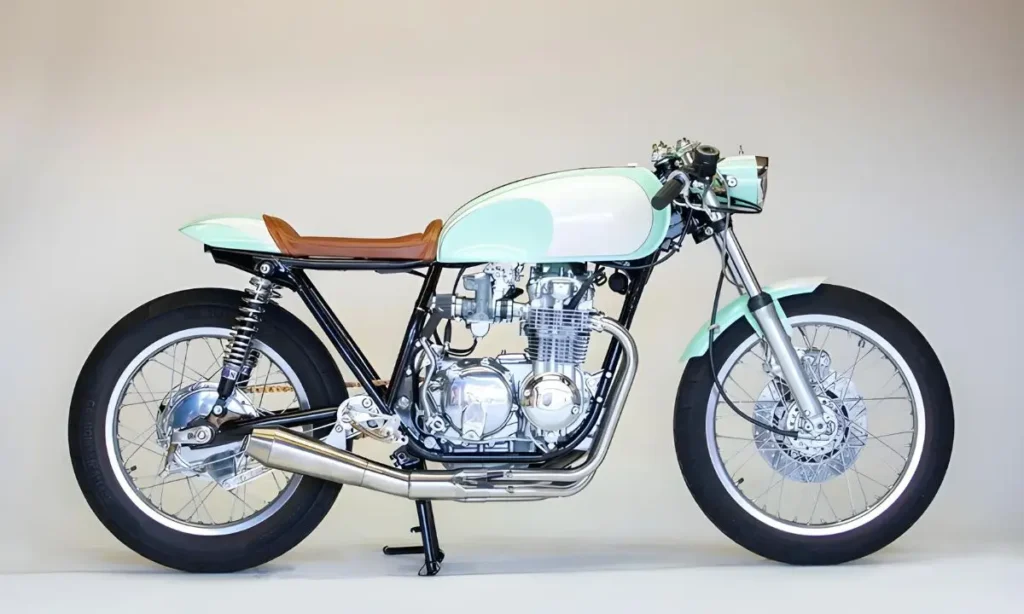Table of Contents
ToggleCafé racers blend performance with vintage style. But behind their clean look, the engine cooling system plays a key role. It affects how the bike handles heat, performs on the road, and lasts over time. Riders often choose between air-cooled and liquid-cooled engines. Both have pros and cons depending on where and how you ride. This guide breaks down each system in a simple way. You’ll learn how they work, what to expect, and which one fits your custom build best. Whether you’re new to bikes or planning your next project, this comparison will help you choose wisely.
What Is an Engine Cooling System?
An engine cooling system controls the heat created during combustion. As the engine runs, it produces high temperatures. Without cooling, this heat can damage engine parts. The cooling system moves heat away from the engine to keep it working safely. It helps maintain stable performance and prevents overheating. Two common types are used in café racers: air-cooled and liquid-cooled systems.
Why Cooling Matters for Motorcycle Performance?
Cooling affects engine efficiency, power delivery, and long-term durability. A well-cooled engine runs smoother, performs better in traffic, and lasts longer. If the engine overheats, it may lose power or wear out faster. Heat also impacts oil quality and internal parts. Proper cooling keeps these parts at safe temperatures. This means better performance, lower maintenance, and fewer mechanical issues.
Air-Cooled Engines: Simplicity and Style
How Air-Cooled Engines Work
Air-cooled engines use moving air to lower engine temperature. The engine has metal fins around the cylinder. These fins increase surface area, so heat moves out faster. As the motorcycle moves, air flows over the engine and cools it down. There are no radiators, pumps, or coolant in this system. It works best when the bike is always in motion.
Advantages of Air-Cooled Café Racers
Air-cooled engines are simple and lightweight. Fewer parts make them easier to maintain. They often cost less to build and repair. Many classic motorcycles use air cooling, which makes them popular for café racer builds. The engine looks clean and open, which fits vintage styling. These engines also have a distinct sound that appeals to many riders.
Common Challenges with Air-Cooled Bikes
Air-cooled engines do not handle traffic or slow riding well. Without airflow, heat builds up fast. High engine temperatures can reduce performance and shorten engine life. Riding in hot weather can make this worse. They also offer less temperature control compared to liquid-cooled systems. You need to monitor engine heat often, especially during city riding or long stops.
Liquid-Cooled Engines: Power and Precision
How Liquid-Cooled Engines Work
Liquid-cooled engines use coolant to remove heat. The system includes a radiator, pump, hoses, and coolant fluid. Coolant flows through the engine, absorbs heat, and moves it to the radiator. The radiator releases the heat into the air using a fan or natural airflow. This system keeps the engine at a steady temperature in different riding conditions. It works well in both slow and fast rides.
Benefits of Liquid-Cooled Café Racers
Liquid cooling offers more precise temperature control. This helps the engine run at its best even in traffic or on hot days. Riders can expect smoother power delivery and better performance under load. These engines also allow for higher compression and better tuning. That means more horsepower and improved fuel efficiency. For café racers focused on power and modern reliability, this system is a strong choice.
Potential Drawbacks to Consider
Liquid-cooled systems have more parts. This makes them heavier and more complex. Maintenance is higher because of coolant changes, pump checks, and possible leaks. Repairs may cost more if a part fails. Some builders also feel that radiators and hoses reduce the clean, open look of classic café racers. For those who value pure vintage aesthetics, this can be a drawback.
Performance Comparison: Air-Cooled vs Liquid-Cooled
Heat Management in Different Riding Conditions
Air-cooled engines depend on airflow. They cool best at higher speeds. In city traffic or during long stops, heat can build up quickly. Liquid-cooled engines handle all conditions better. They keep stable temperatures even in slow rides or hot weather. This gives more consistent performance, especially in urban areas or summer climates.
Maintenance and Reliability
Air-cooled systems have fewer parts. This makes them easier to inspect and repair. There is no coolant to replace or pump to maintain. But they need careful attention in hot conditions to avoid overheating. Liquid-cooled systems require regular checks of coolant levels and components. They are more reliable under pressure but need more service to stay in top shape. Both systems can last long with proper care.
Engine Longevity and Tuning Potential
Heat control affects engine life. Liquid-cooled engines stay cooler, which reduces wear on parts. This helps them last longer, especially when used hard or in warm climates. They also offer more room for tuning and performance upgrades. Air-cooled engines are simpler but run hotter. This may limit how much you can push or modify them without risk. Builders who want high output often choose liquid cooling for that reason.
Which One Should You Choose for Your Café Racer Build?
Budget and Build Complexity
Air-cooled engines are less expensive. They have fewer parts and require less setup. This makes them ideal for builders with limited tools or experience. Liquid-cooled engines cost more due to added components like radiators and pumps. They also need careful placement and fitment. For a first-time project, air cooling offers a simpler and more budget-friendly option.
Riding Style and Environment
If you ride in city traffic or hot climates, a liquid-cooled engine performs better. It handles slow speeds and stop-and-go riding without overheating. For open roads or cooler areas, air-cooled engines can work well. Riders who enjoy weekend rides and short commutes often prefer the simplicity of air cooling. Your choice depends on where and how you ride most often.
Visual Aesthetics and Customization
Many café racer builders care about the look of the engine. Air-cooled engines have a clean, classic appearance. The visible fins and open design match vintage styling. Liquid-cooled engines include hoses and a radiator, which may change the bike’s look. Some builders prefer the modern performance of liquid cooling even if it affects the visual layout. It comes down to personal taste and build goals.
Final Thoughts
Choosing between air-cooled and liquid-cooled engines depends on your needs, riding habits, and design goals. Both systems manage engine temperature but in different ways. Air-cooled engines are simple, lightweight, and perfect for classic café racer builds. They suit cooler climates and riders who enjoy short or weekend rides. Liquid-cooled engines offer better performance in high-heat or slow-riding conditions. They keep the engine stable under pressure and support tuning upgrades.
Before deciding, think about your build budget, maintenance comfort, and visual preferences. Some riders prefer a clean vintage look. Others focus on modern function and reliability. There is no one right answer. The best choice is the one that fits your riding style and long-term plans. Take your time, compare options, and match the engine system to your café racer vision.



